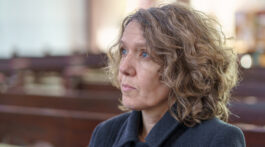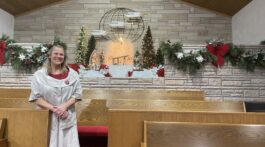“While we should put forth our earnest efforts for the masses of people around us, and push the work into foreign fields, no amount of labor in this line can excuse us for neglecting the education of our children and youth.”1
Did you know there were once Adventist schools in small towns such as Gothenburg, Hemingford, and Elm Creek, Nebraska, and Fort Scott, Fredonia and Osborne, Kansas? I have found records going back to the 1960s of 23 small schools in our conference that are no longer in operation.
Most of these schools have closed due to demographic shifts in the population. Many rural counties in Kansas and Nebraska have smaller populations today than they did 100 years ago.
The 2010 Census showed more than half of Nebraska’s 93 counties lost 10 percent or more of their population in the previous decade, while counties around Lincoln and Omaha grew.2 More than half of the state’s population is now concentrated in just three metropolitan counties: Douglas, Sarpy and Lancaster.3
Kansas has a similar story. Census information from 2014 shows that from 2000 to 2013 the state had a net loss of 10,197 people. During that period only the counties of Johnson, Riley and Douglas saw growth.4
Conventional wisdom would suggest that opening a church school outside a major metropolitan area in our conference would be unwise. But miracles don’t happen within the bounds of conventional wisdom.
Two years ago the members of the Garden City Church in Kansas decided to step out in faith and reopen their school, which had been closed for several years. This meant a major financial commitment and trust that parents would enroll their children.
When the school opened in August 2015 only 11 students enrolled, and soon they were down to eight students. Many were surprised in 2016, though, when 13 students enrolled.
But it didn’t end there. The following year 19 students enrolled. There hasn’t been a one-teacher school in the conference with that many students in the last 20 years!
When asked what accounted for this growth, teacher Jessi Whitson responded, “This is an extremely supportive church. Not only do they encourage families to send their children but they are willing to find funding for students who would never be able to afford the tuition.”
Other members echoed this sentiment but added one more tid-bit: “We love our teacher!”
I recently visited their classroom and encountered 19 happy students who are delighted to be in a caring Christian environment—an environment that reflects the values of their parents.
I recently visited their classroom and encountered 19 happy students who are delighted to be in a caring Christian environment—an environment that reflects the values of their parents.
Gary Kruger serves as Education Superintendent for the conference.
References:
- White, Ellen G. Counsels to Parents, Teachers, and Students. Pacific Press Publishing Association, 1913. p. 165.
- Reist, Margaret. “Population shifts, demographic changes pose challenges for Nebraska educators.”
3 August 2011. Lincoln Journal Star. - “Nebraska Population Aging, Shifting East.” University of Nebraska. Retrieved from https://sdn.unl.edu/deichert
- Man, Fred. “Census: More people moving out of Kansas than moving in.” 27 March 2014. The Kansas City Star.










